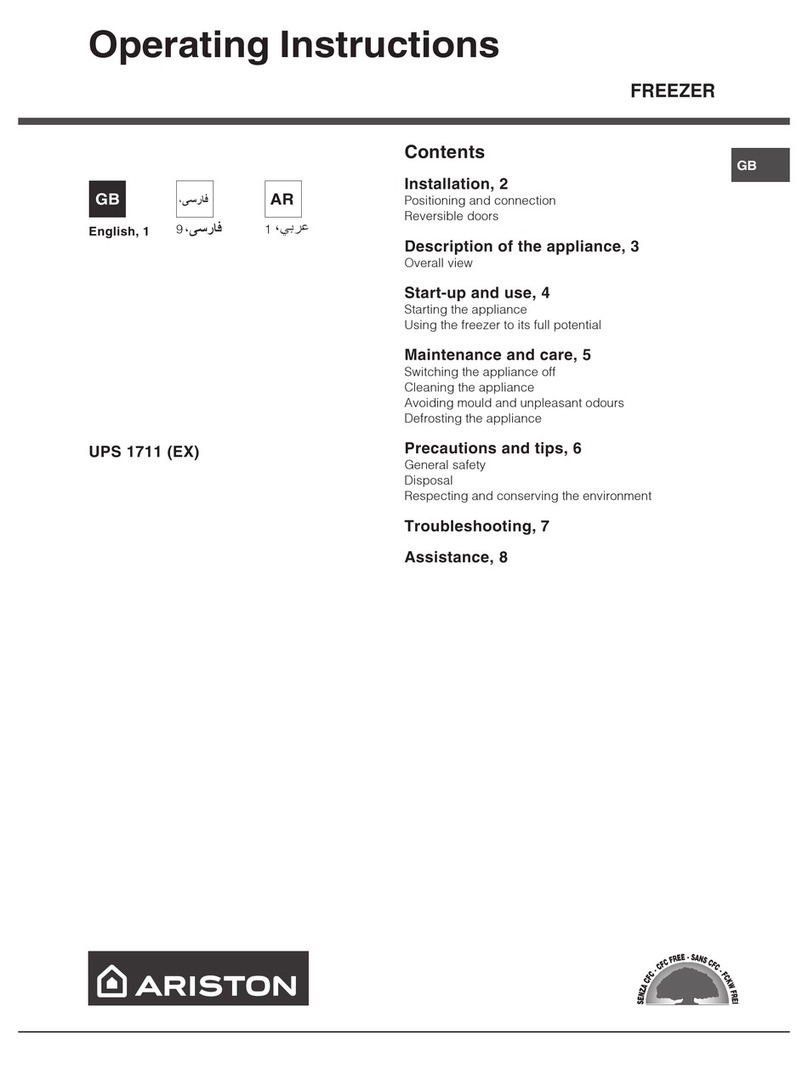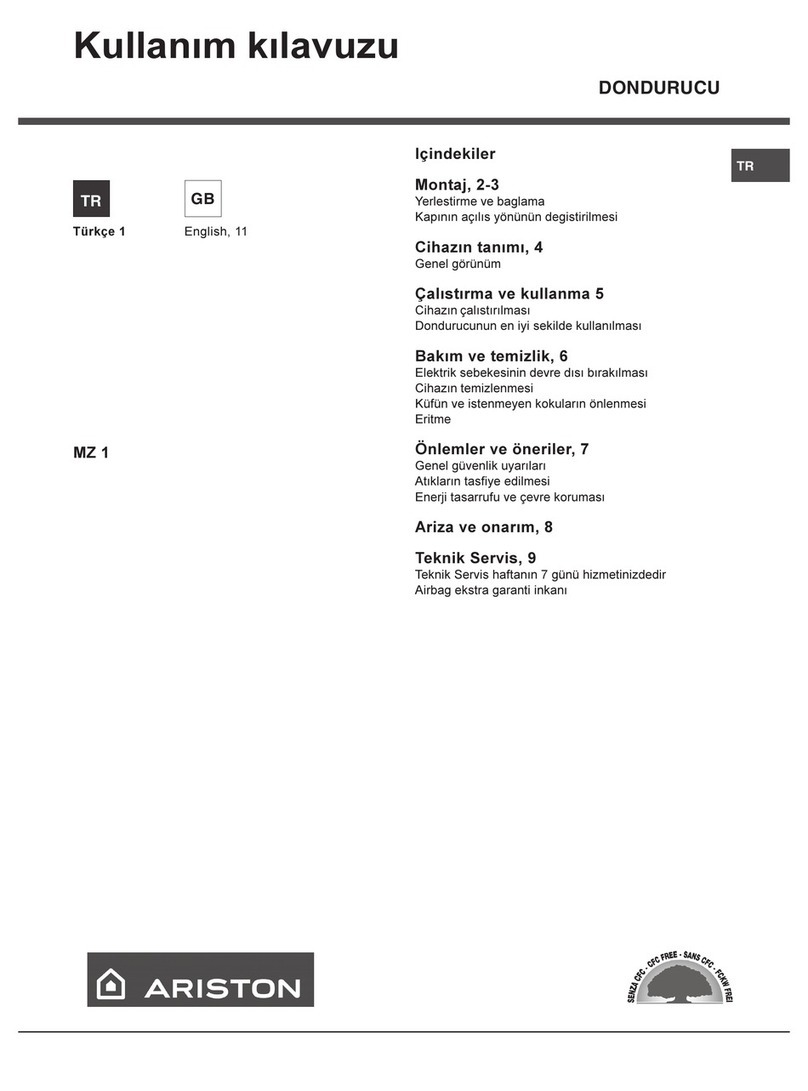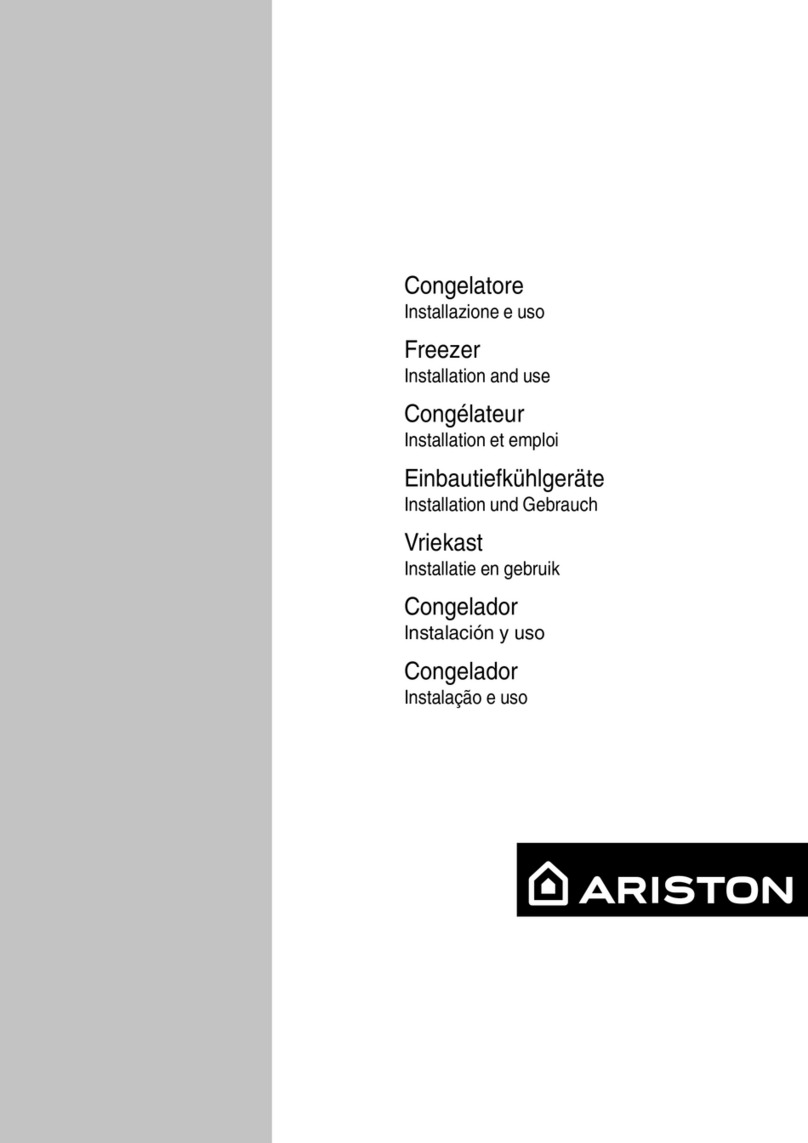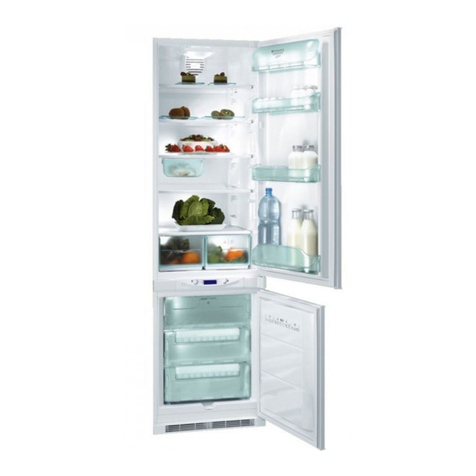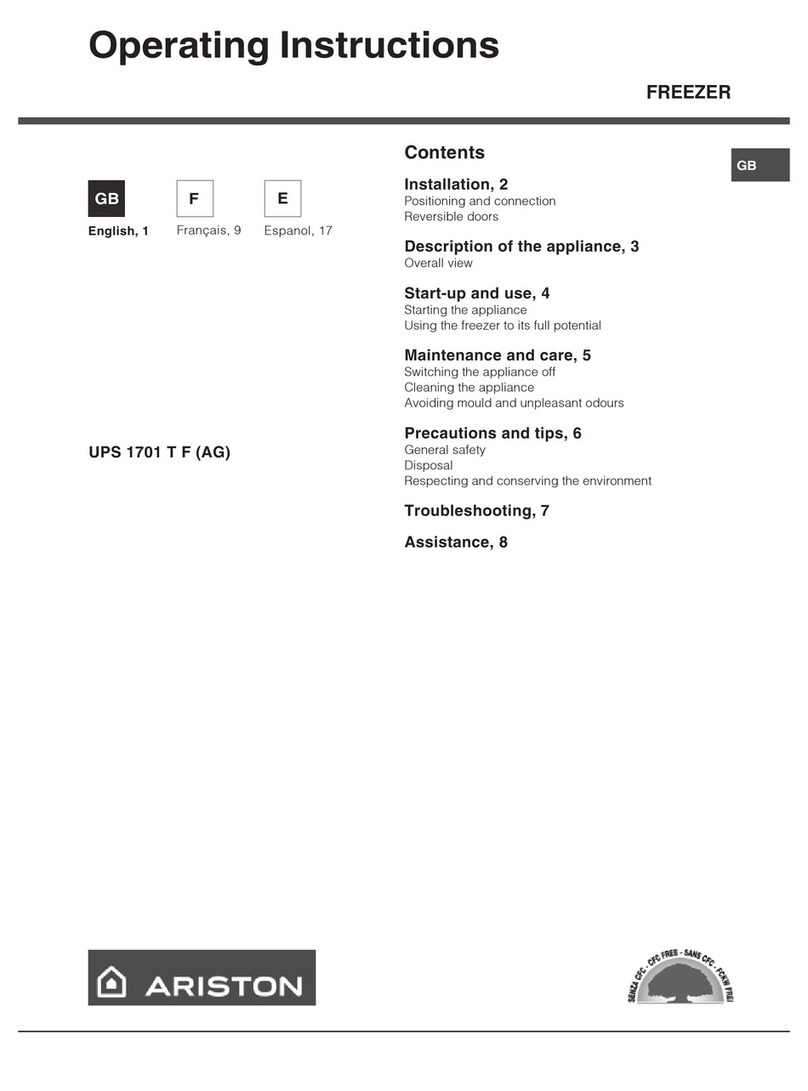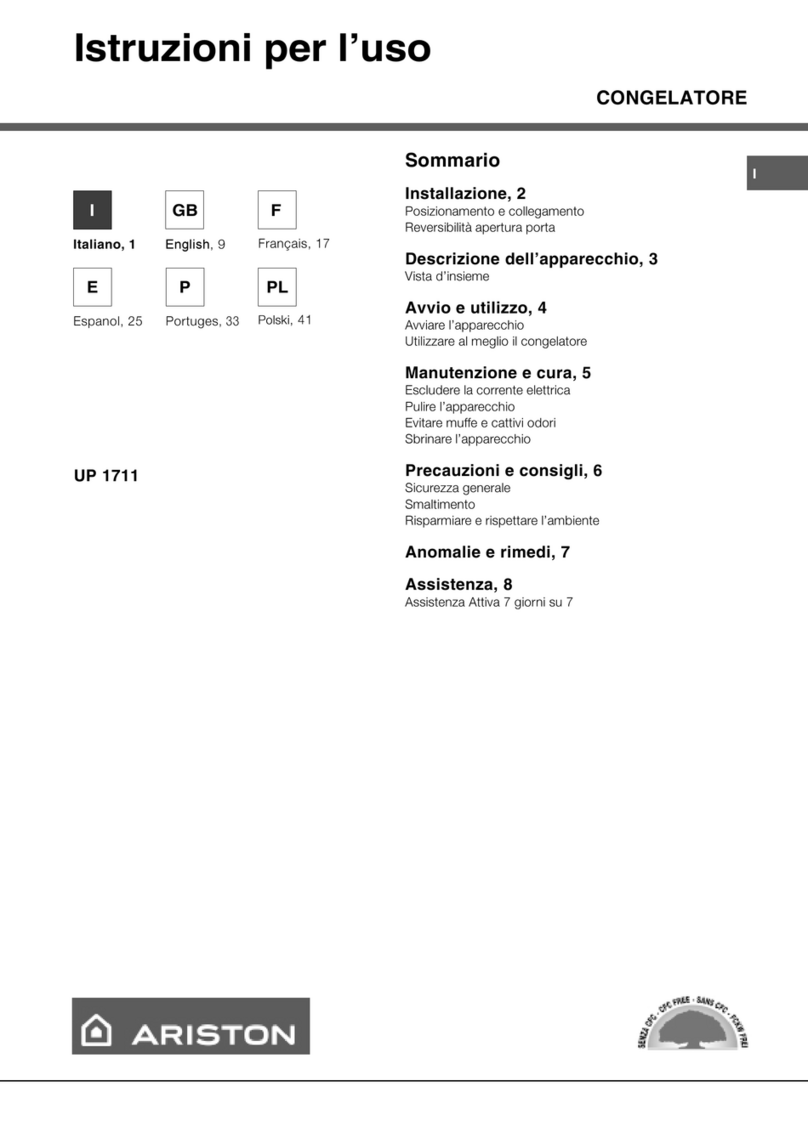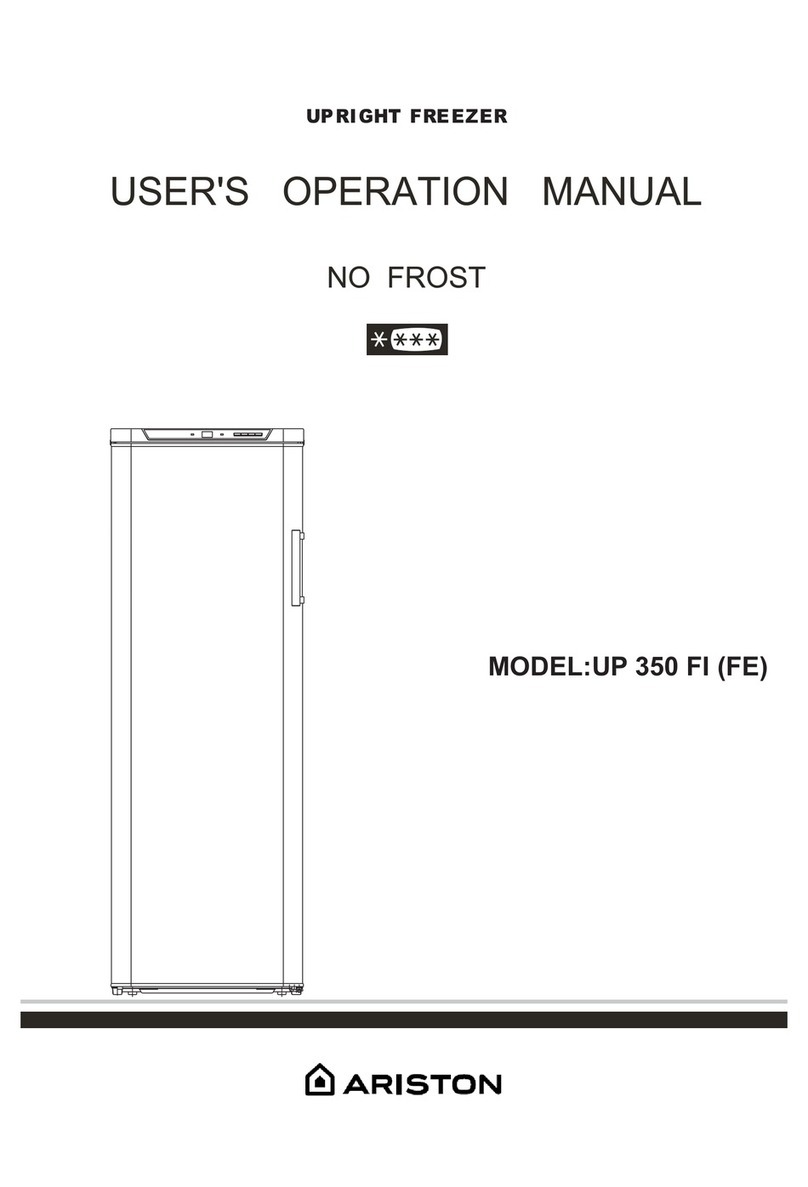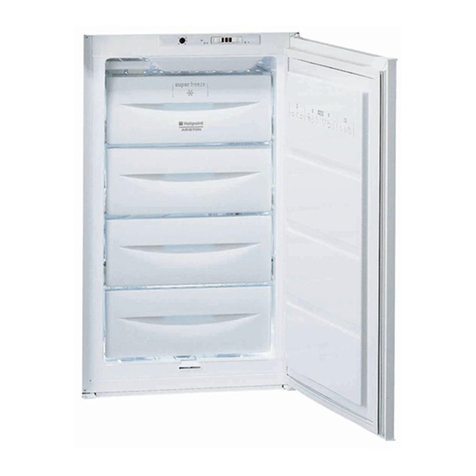
1I
La sicurezza, una buona abitudine
le mani bagnate poiché potreste scottarvi o ferirvi. Né met-
tere in bocca cubetti di ghiaccio appena estratti dall'appa-
recchio poiché rischiate di ustionarvi.
7. Prima di procedere a qualsiasi operazione di pulizia stac-
care l'apparecchio dalla rete di alimentazione (disinserendo
la spina o l'interruttore generale dell'appartamento).
8. Prima di farvi ritirare il vecchio congelatore, mettete fuori
uso l’eventuale serratura per evitare che i bambini, giocan-
do, possano rimanere chiusi dentro l’apparecchio.
9. In caso di guasto, prima di chiamare il servizio-assistenza,
controllate al capitolo “C’è qualche problema?” per verificare
se è possibile eliminare l’eventuale inconveniente. Non tentate
di riparare il guasto, cercando di accedere alle parti interne.
10. In caso di sostituzione del cavo di alimentazione rivol-
gersi ai nostri Centri di Aassistenza. In alcuni casi le connes-
sioni sono eseguite con terminali speciali, in altri è richiesto
l’uso di un utensile speciale per accedere ai collegamenti.
11. Non usate apparecchi elettrici all'interno dello scompar-
to conservatore di cibi, se questi non sono del tipo racco-
mandato dal costruttore.
12. Al termine della vita funzionale dell'apparecchio, conte-
nente gas ciclopentano nella schiuma isolante ed eventual-
mente gas R600a (isobutano) nel circuito refrigerante, lo stes-
so dovrà essere messo in sicurezza prima dell'invio in disca-
rica. Per questa operazione rivolgetevi al vostro negoziante
o all'Ente Locale preposto.
Installazione
Per garantire un buon funzionamento e un consumo
contenuto di elettricità è importante che l’installazio-
ne sia eseguita correttamente.
L’aerazione
Il compressore ed il condensatore emettono calore e richie-
dono perciò una buona aerazione. Sono poco adatti am-
bienti con una non perfetta ventilazione. L’apparecchio va
quindi installato in un ambiente servito da un’apertura (fi-
nestra o portafinestra) che assicuri il necessario ricambio
dell’aria. E che non sia troppo umido.
Fare attenzione, durante l'installazione, a non coprire od
ostruire le griglie che permettono la buona ventilazione del-
l'apparecchio.
Per una buona aerazione dell'apparecchio occorre lasciare:
- una distanza di almeno 10 cm tra la parte superiore ed
eventuali mobili sovrastanti;
- una distanza di almeno 5 cm tra le fiancate ed eventuali
mobili/pareti laterali.
Lontano dal calore
Evitare di posizionare l'apparecchio in un luogo direttamen-
te esposto alla luce solare, accanto alla cucina elettrica o
similari.
In piano
L'apparecchio deve essere ben in piano; se il pavimento non
è livellato, è possibile intervenire con gli appositi piedini re-
golabili posti anteriormente.
Collegamento elettrico e messa a terra
Prima di procedere al collegamento elettrico, controllate che
il voltaggio indicato sulla targhetta caratteristiche, che si trova
all'interno del congelatore, corrisponda a quella del vostro
impianto di casa, e che la presa sia dotata di una regolare
messa a terra, come prescrive la legge sulla sicurezza degli
impianti 46/90. Se manca la messa a terra, la Casa
Costruttrice declina ogni responsabilità. Non usate prese mul-
tiple o adattatori.
Posizionare l’apparecchio in mode che la presa, a cui
è collegato, sia accessibile.
La potenza è insufficiente?
La presa elettrica deve essere in grado di sopportare il carico
massimo di potenza dell’apparecchio, indicata sulla targhet-
ta caratteristiche posta in basso a sinistra all'interno del con-
gelatore.
Prima di collegarlo elettricamente
Dopo il trasporto posizionare l’apparecchio verticalmente ed
attendere almeno 3 ore prima di collegarlo alla presa, per
consentire un corretto funzionamento.
ATTENZIONE
Leggete attentamente le avvertenze contenute nel presen-
te libretto in quanto forniscono importanti indicazioni riguar-
danti la sicurezza di installazione, d’uso e di manutenzione.
Questa apparecchiatura è conforme alle se-
guenti Direttive Comunitarie:
- 73/23/CEE del 19/02/73 (Basse Tensioni) e successive
modificazioni;
- 89/336/CEE del 03/05/89 (Compatibilità Elettromagnetica)
e successive modificazioni.
1. Questo apparecchio non va installato all’aperto, nemme-
no se lo spazio è riparato da una tettoia; è molto pericoloso
lasciarlo esposto alla pioggia e ai temporali.
2. Deve essere usato soltanto da adulti ed esclusivamente
per conservare i cibi, seguendo le istruzioni d’uso scritte in
questo manuale.
3. Non toccate né manovrate mai l’apparecchio a piedi nudi
o con le mani o piedi bagnati.
4. Sconsigliamo di ricorrere a prolunghe e multiple. Se il con-
gelatore è installato tra i mobili, controllate che il cavo non
subisca piegature o compressioni pericolose.
5. Non tirate mai il cavo né il congelatore per staccare la
spina dalla presa a muro: è molto pericoloso.
6. Non toccate le parti interne raffreddanti soprattutto con
